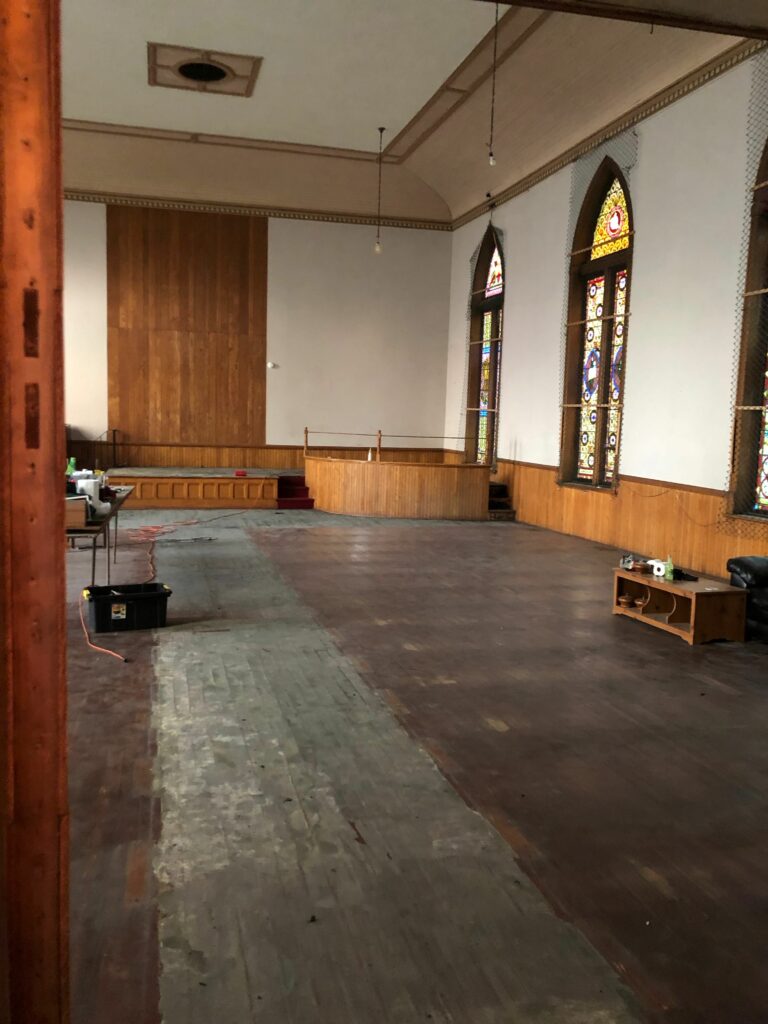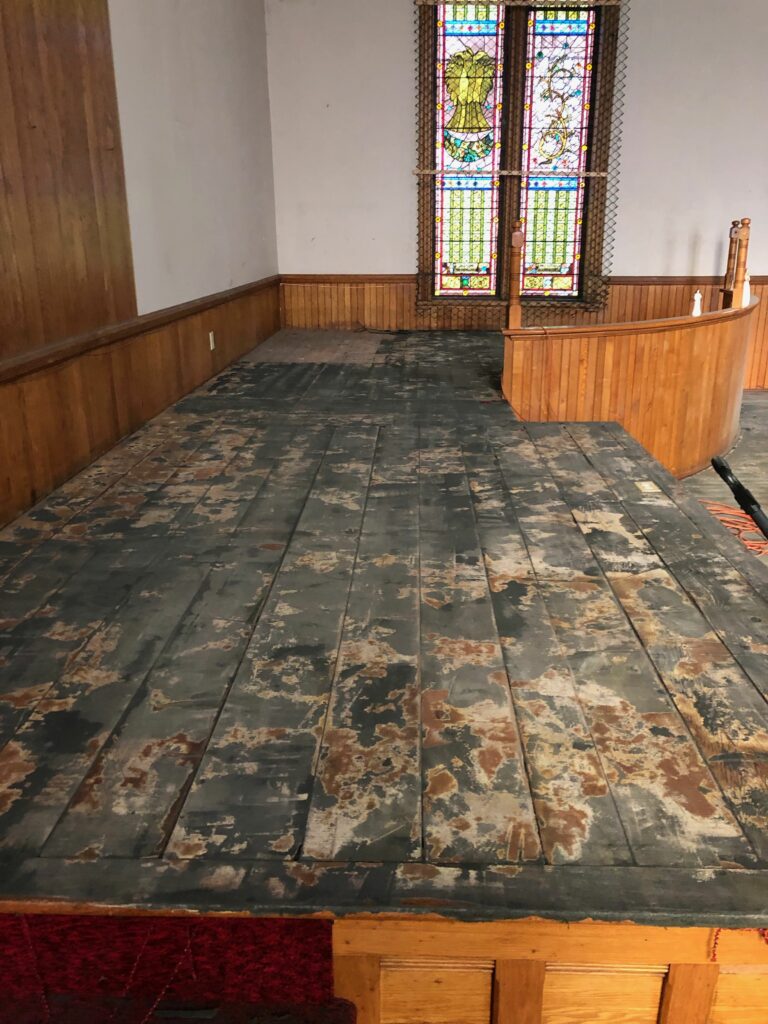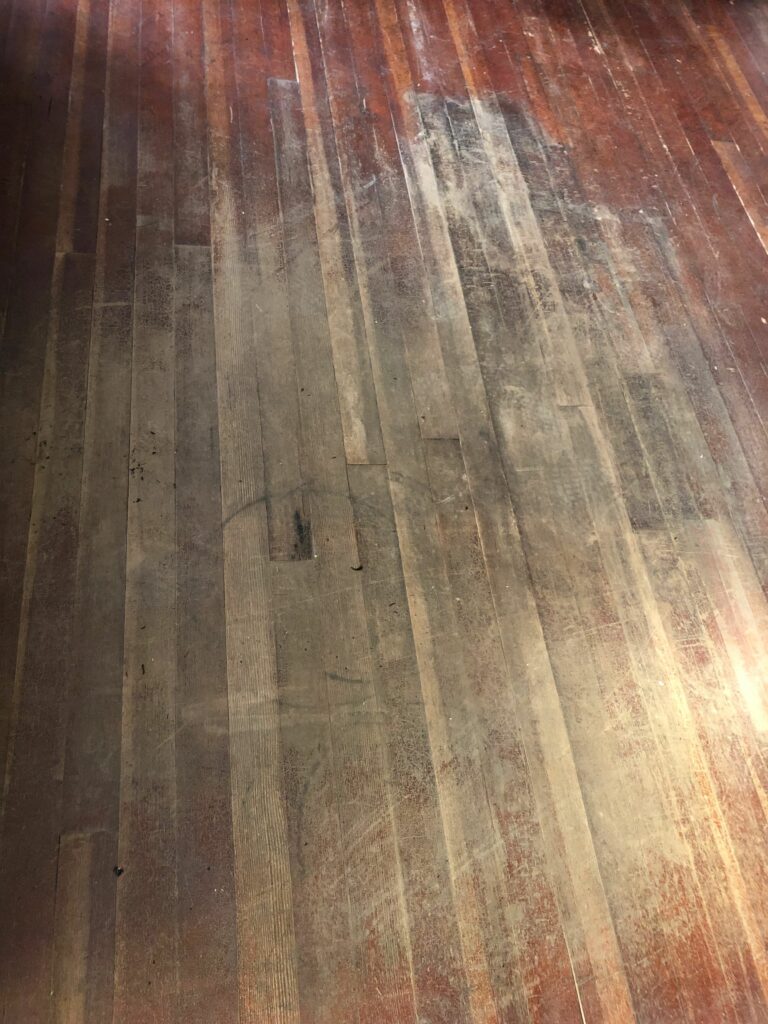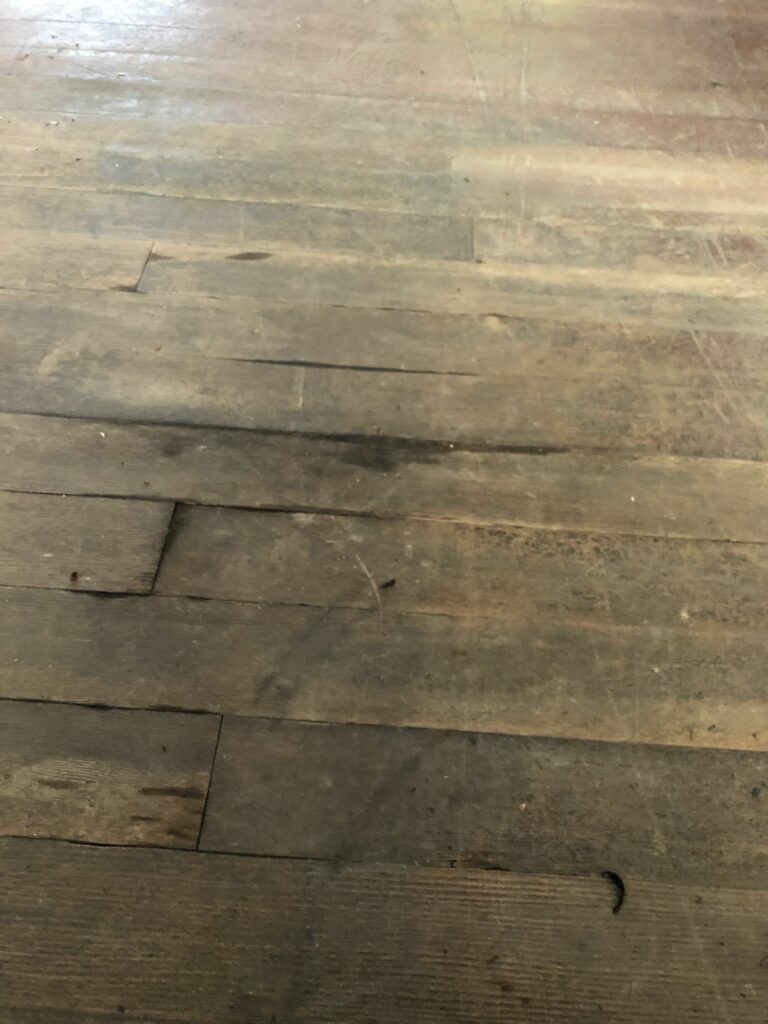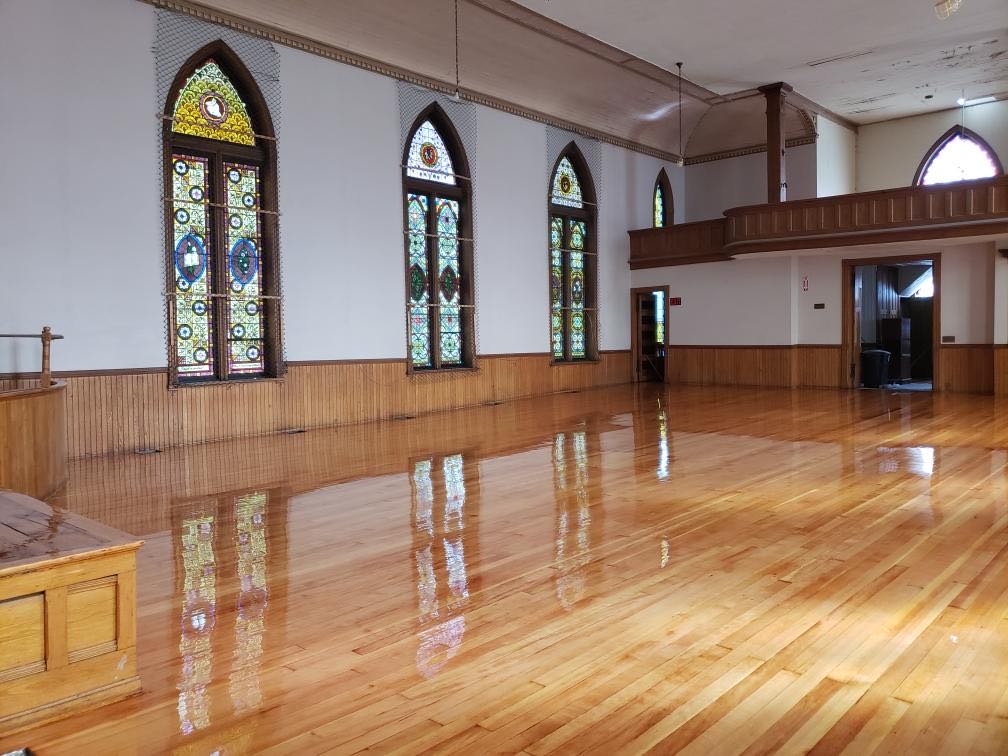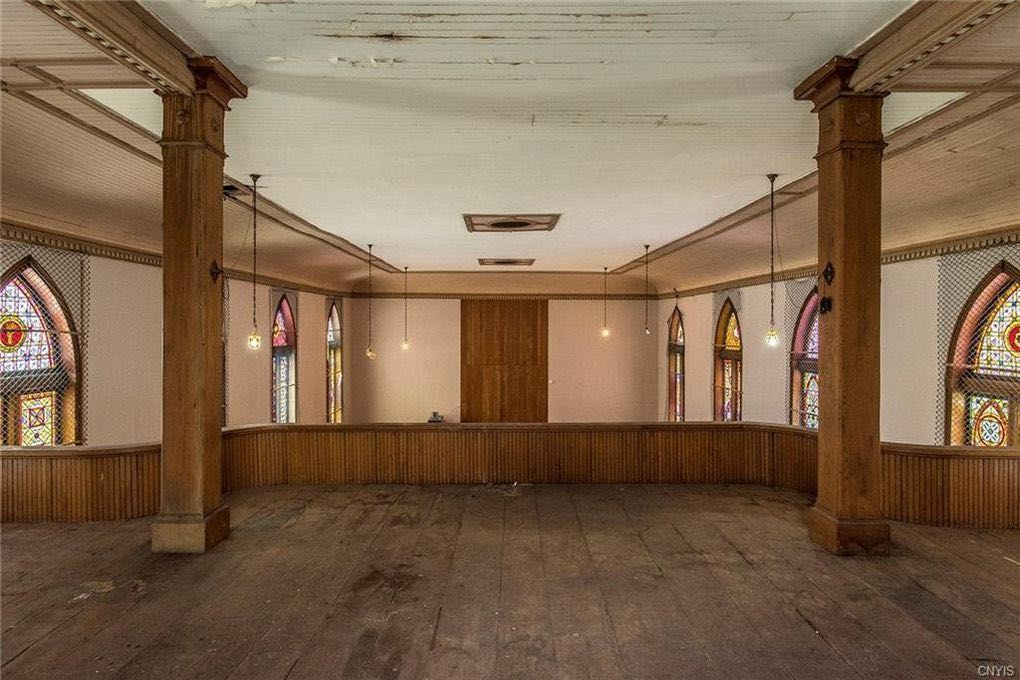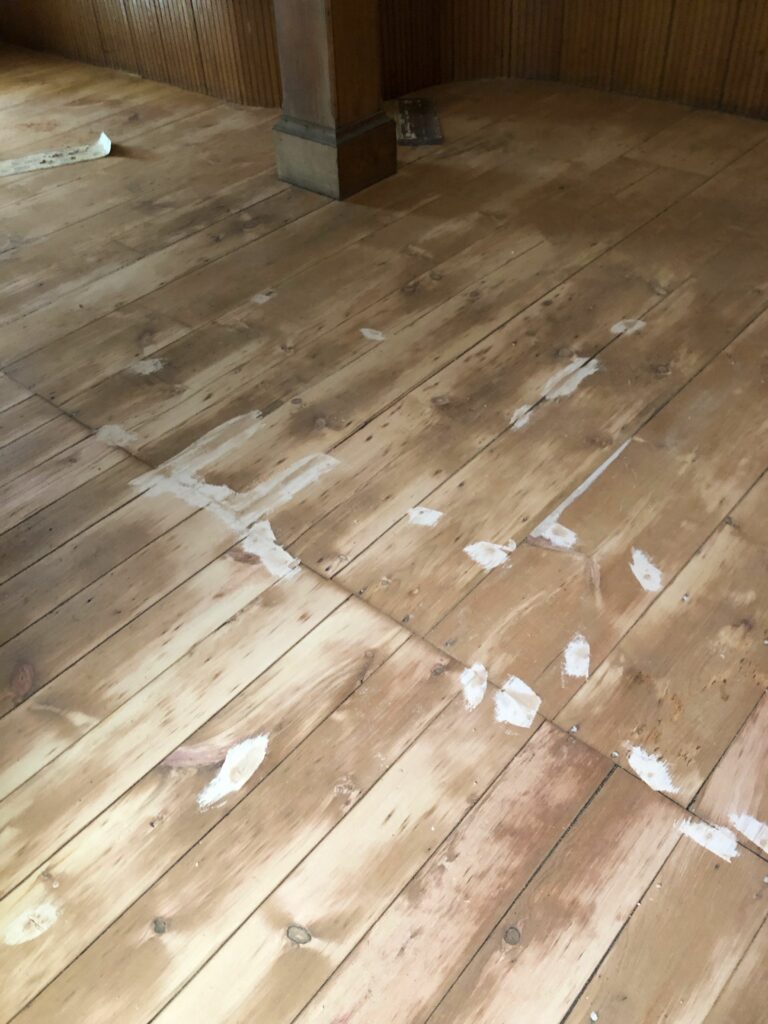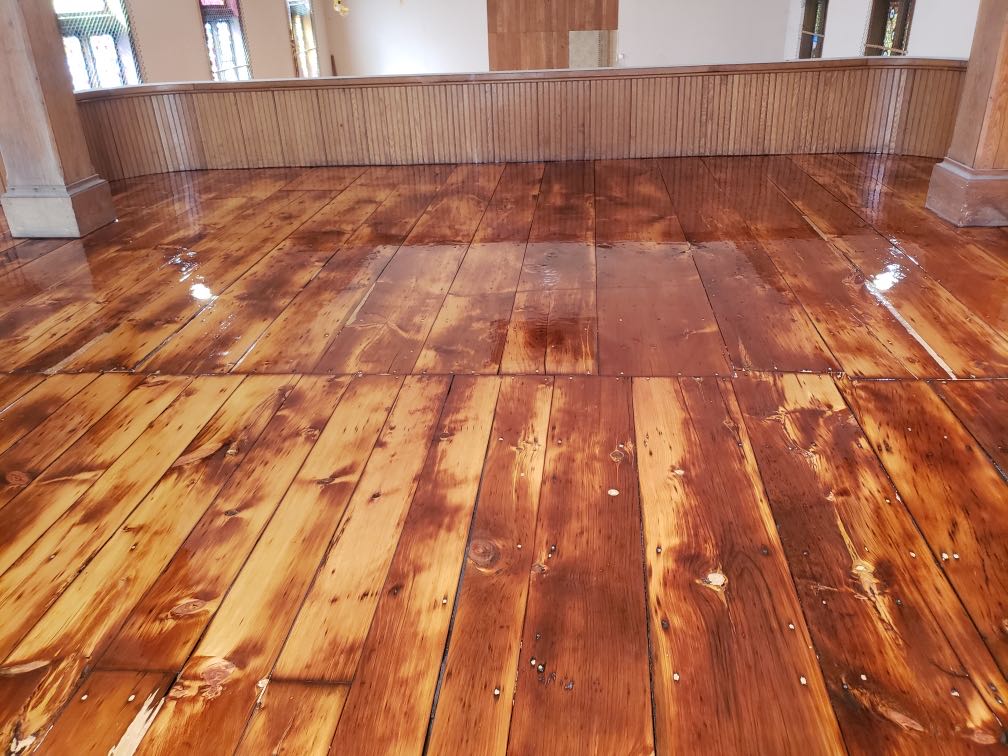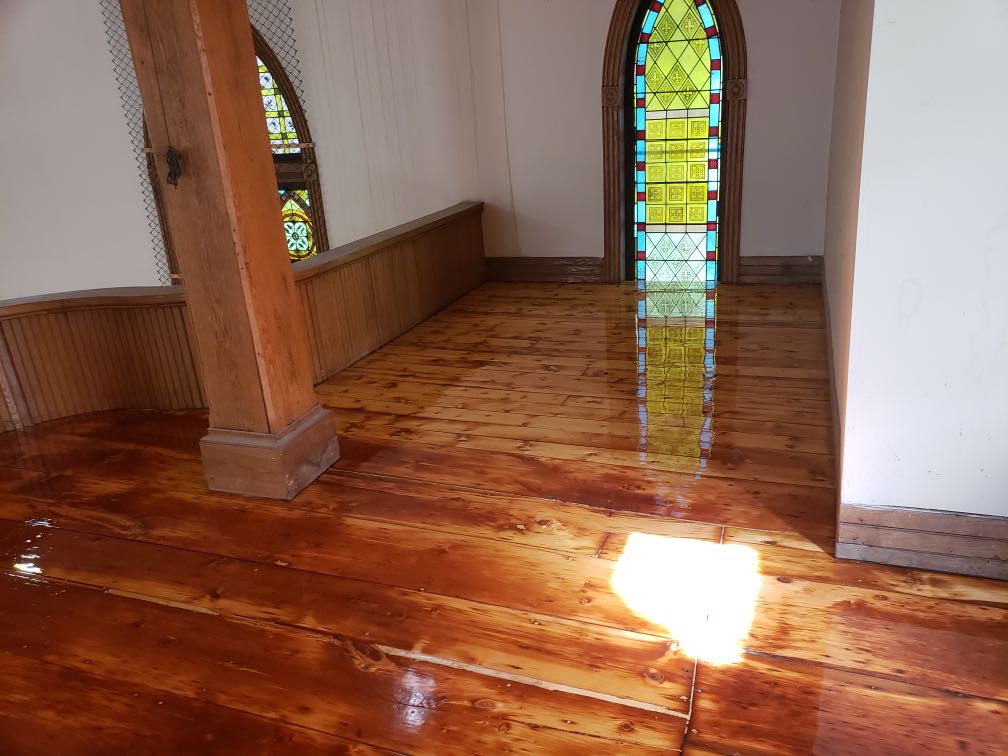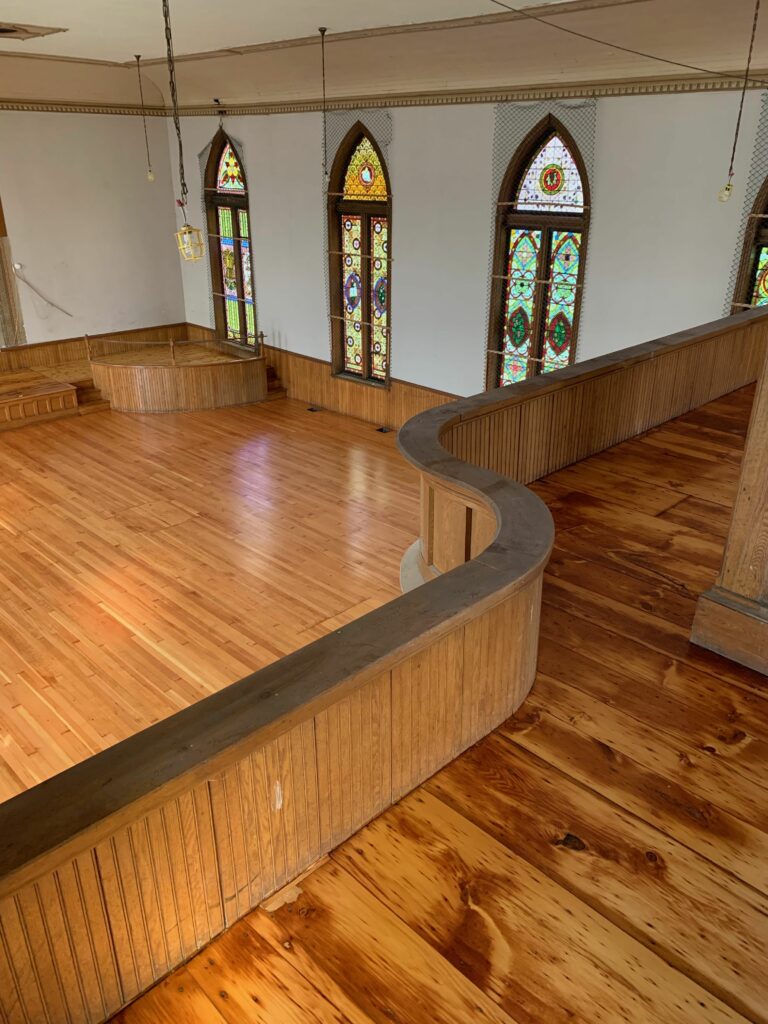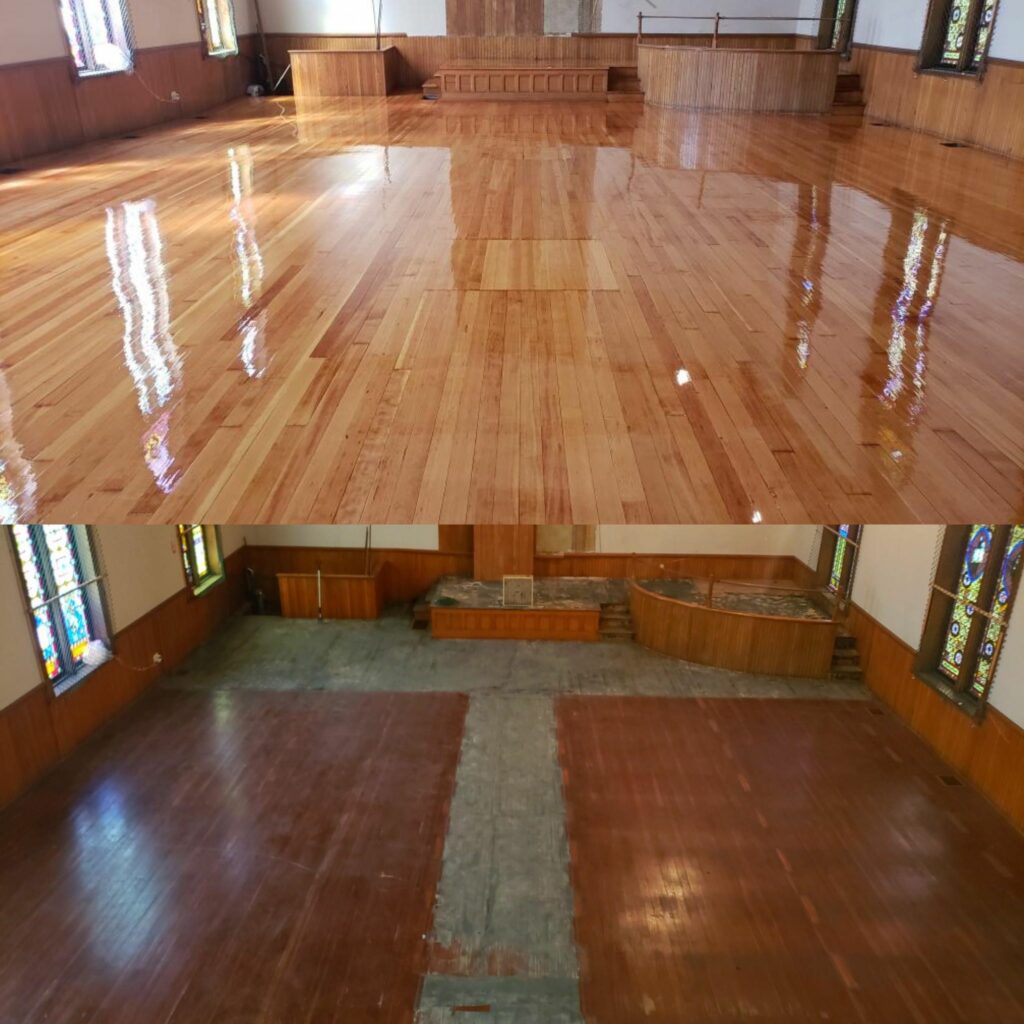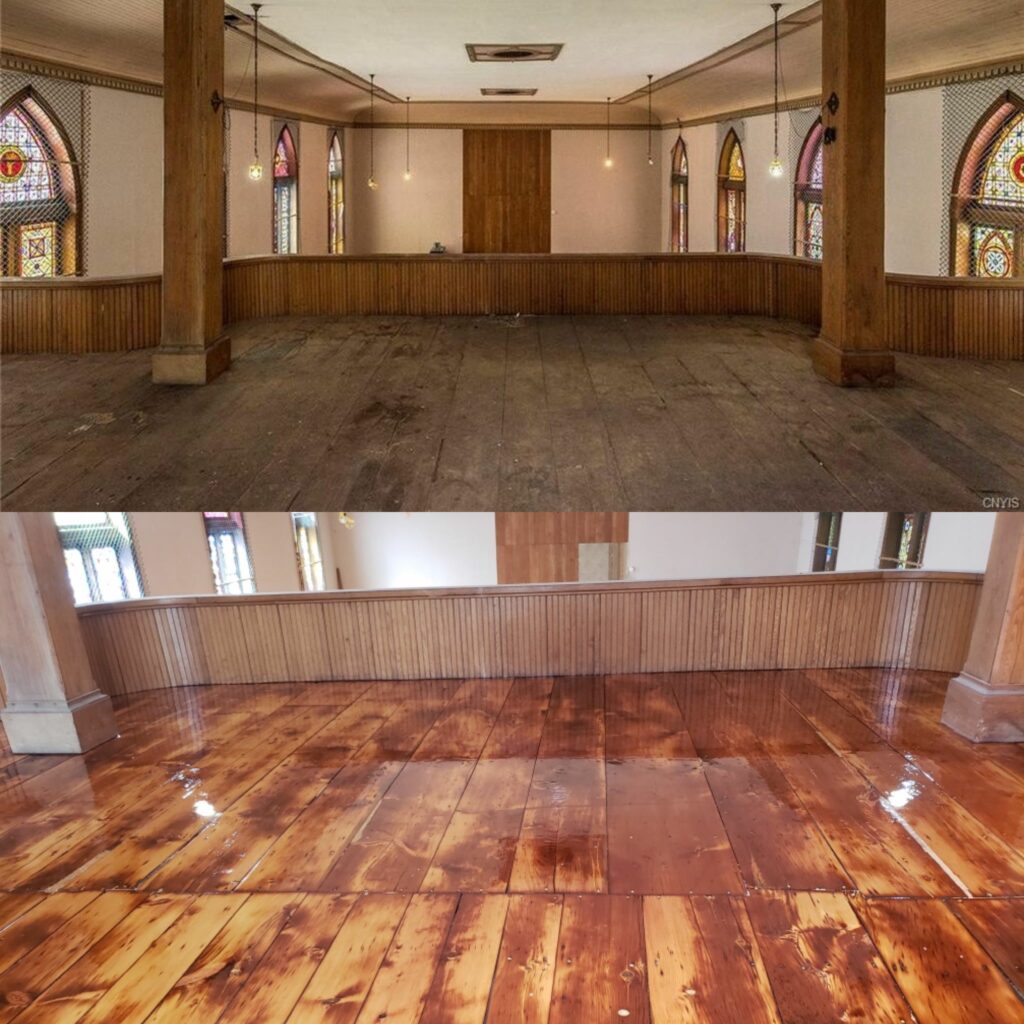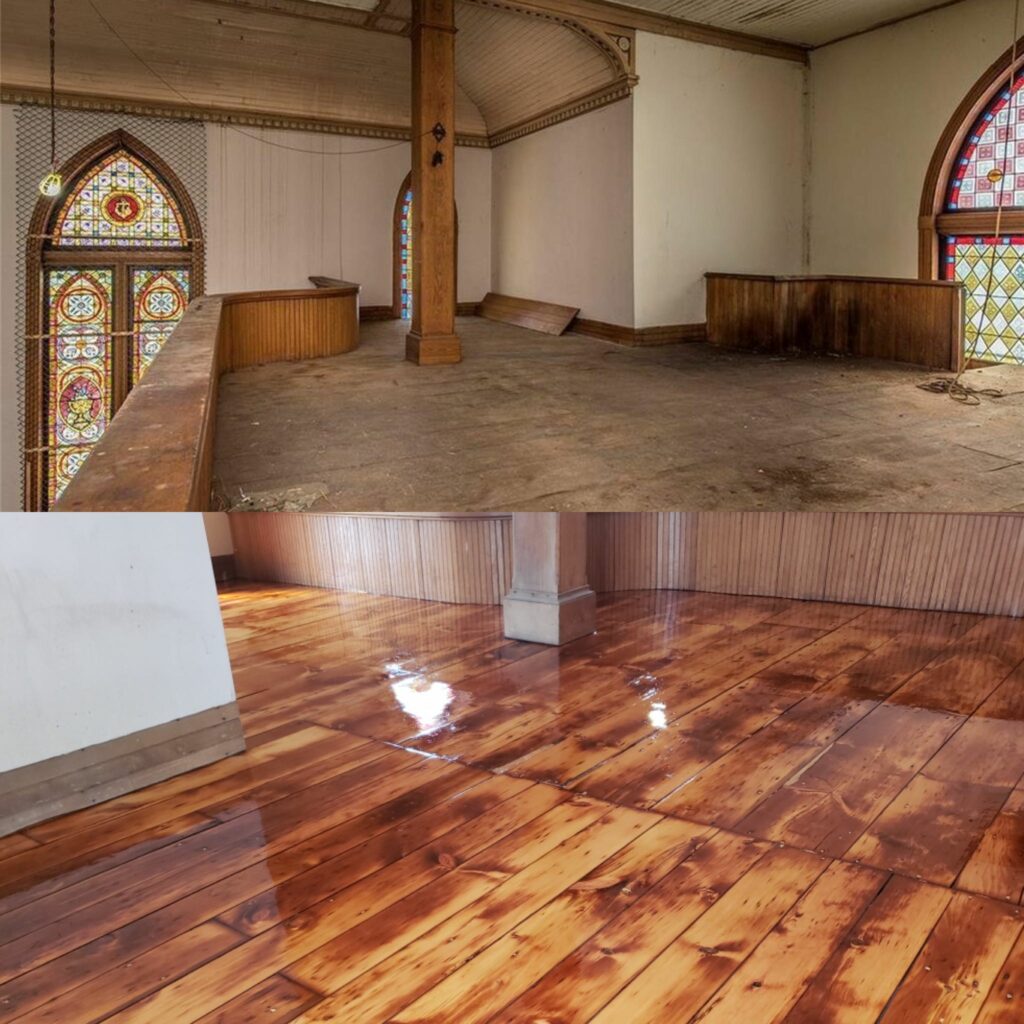Sanctuary and Altar Floors
The sanctuary floor had never been sanded, even when it was installed–in 1885. This hardwood floor, made of southern yellow pine (spruce) was installed during the 1885 renovation, on top of what is likely a wideboard hemlock floor from the 1839/1940 construction.
When we began in May 2019, the sanctuary floor was in rough shape, with water damage, glue resin from carpeting, plus normal wear and tear. Once the slate roof leaks were fixed, and the leftover debris cleared, we were able to turn our attention to the floor.
The altar floorboards are uniform-size meaning they are probably from the 1885 renovation, as the 1840 version of the church had a 6-foot high altar! Though these boards may have been re-used from 1840.
The floor was most work near the back and to the right. That’s because the winter breeze blew from left to right through the windows, and the heater vent was near the back in the center alley, therefore the warmest pews were the ones that received the most wet boots, wear and tear over the years.
For their expertise in working with historic wood floors, we turned to Larry and Bret Thompson of Clinton Hardwood Floors to lead the effort. It took approximately 2 weeks to sand the sanctuary floor, and another week to seal it with multiple coats of polyurethane. The result speaks for itself, but to say the least, the interior has not shined so bright in a long time!
Balcony Floor
The balcony was reconfigured around 1866, when the side galleries were removed leaving just rear balcony. The balcony floor was in rough shape, and not only had the wood never been sanded, it was also very dirty. Many of the boards were cracked, some had holes, and all of the 200+ square iron nails had to be re-set.
But the boards are hemlock, many of them as wide as 17″! This is very rare. Though the Vernon area was covered with hemlock trees in the 1790s when settlers arrived, few remain, and finding any large enough to produce 17″ wide floor boards would be nearly impossible. We think these floorboards, given that they were not of uniform size, predated the 1886 remodeling, or even the 1839/40 construction. They were likely re-used from the original 1812 meeting house floor!
The result are astonishing! Bret Thompson said this was one of the nicest floors he had ever seen, and the two-tone beauty revealed by the refinishing was probably the biggest surprise!
